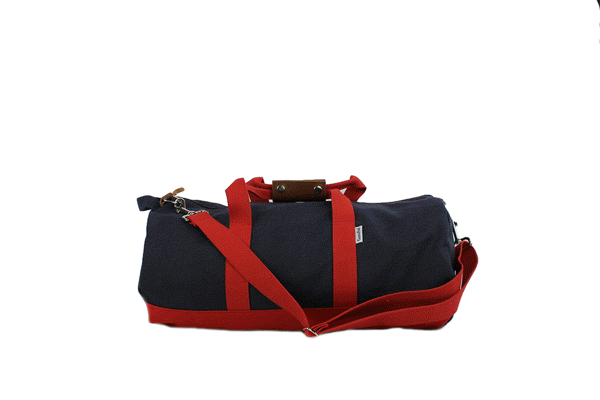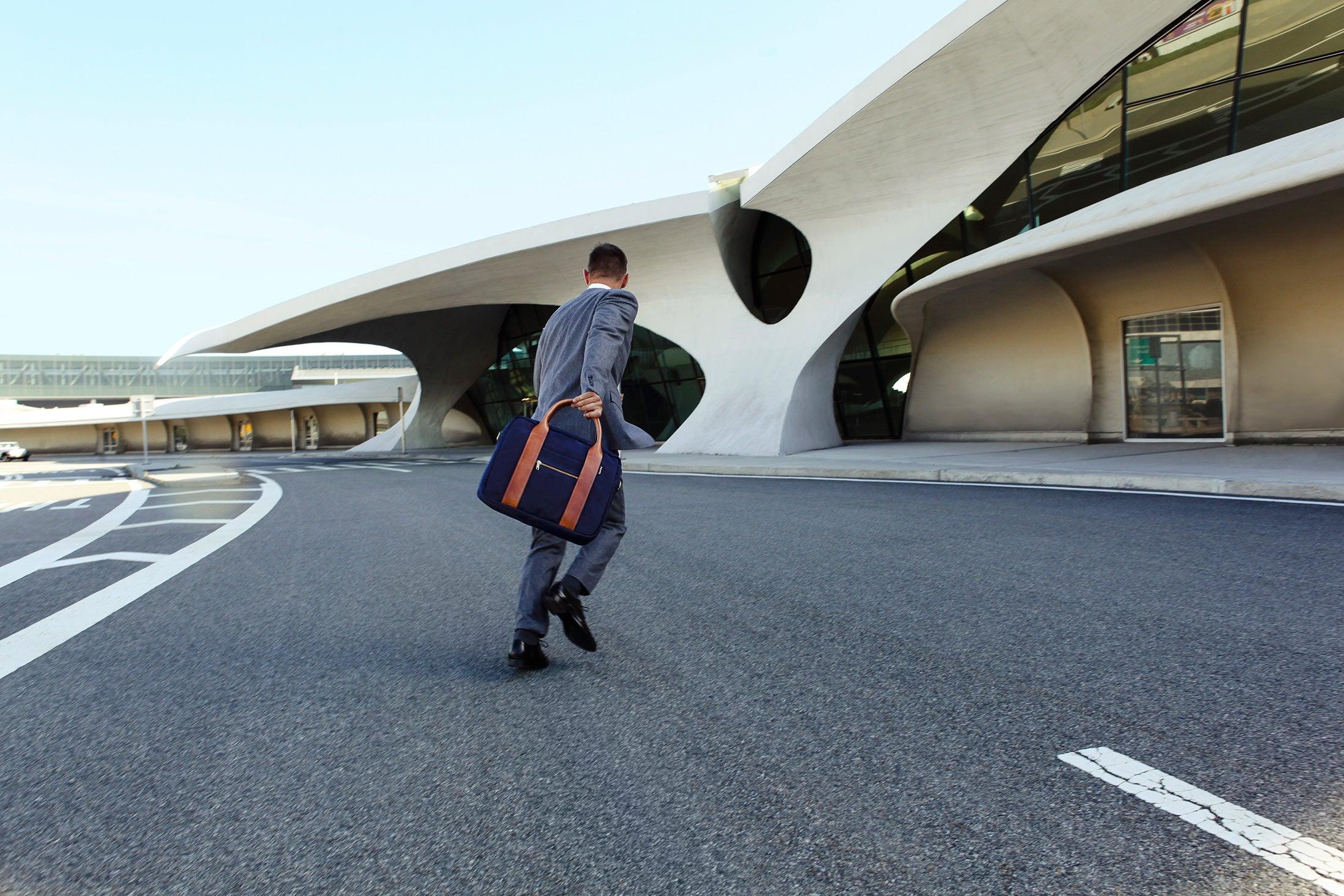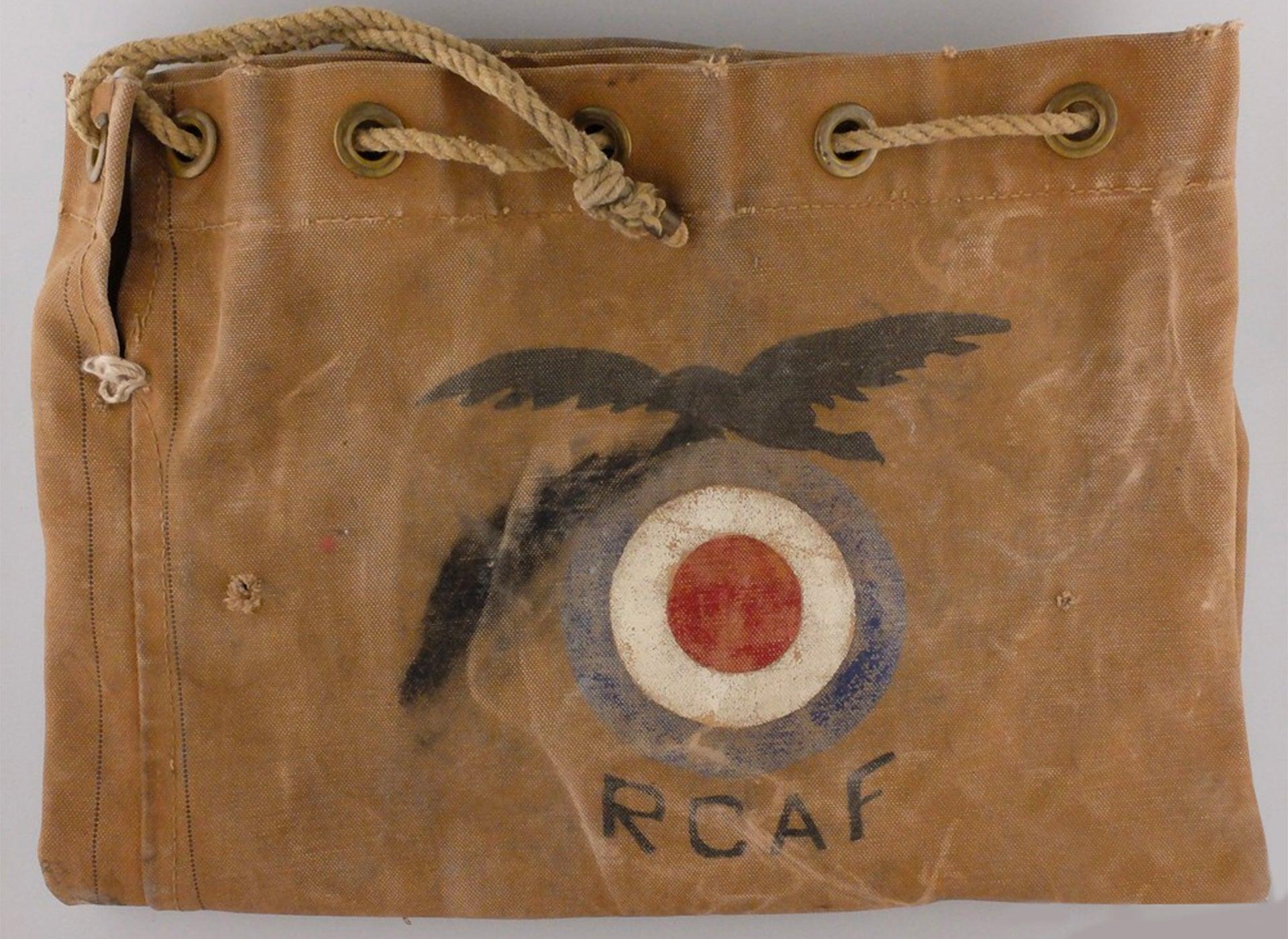
The History of the Duffel Bag
Durable, practical, world-ready.
Mike Arnot is the founder of Boarding Pass NYC and a travel writer for publications including The New York Times.
I've got some experience with duffel bags.
My first duffel bag was issued to me as an officer cadet in the army. I had just turned 18—a man in number but not in maturity— and I went off to boot camp.
I used that army green, three-foot long duffel to carry all of my gear and as a pillow upon which to lay my head and shed quiet, pathetic boot camp tears. (I left it — stupidly — at my ex-girlfriend's house when I broke up with her. Bye, bye duffel. It was probably burned.)
That said, the duffel bag has a pedigree that speaks to its durability, practicality and as a tool made for world travel. Throw your gear in a duffel bag, toss it over your shoulder and you're off to explore the world.
We've been making our version of a men's duffel bag since 2012 and I've always been curious as to how these durable, practical bags came about.
I think they have a surprisingly noble and interesting history, too.
Of course, the world travel where duffel bags first served their owners wasn't particularly pleasant—duffel bags were hauled ashore on D-Day and into battle in Vietnam, as you'll see below.
Nevertheless, the canvas duffel bag is a symbol of worldwide adventure, portability and get up and go. It's a trusty friend, sometimes pillow and typically gets to see it all.
This is the history of the duffel bag. (Even Elvis was issued one.)
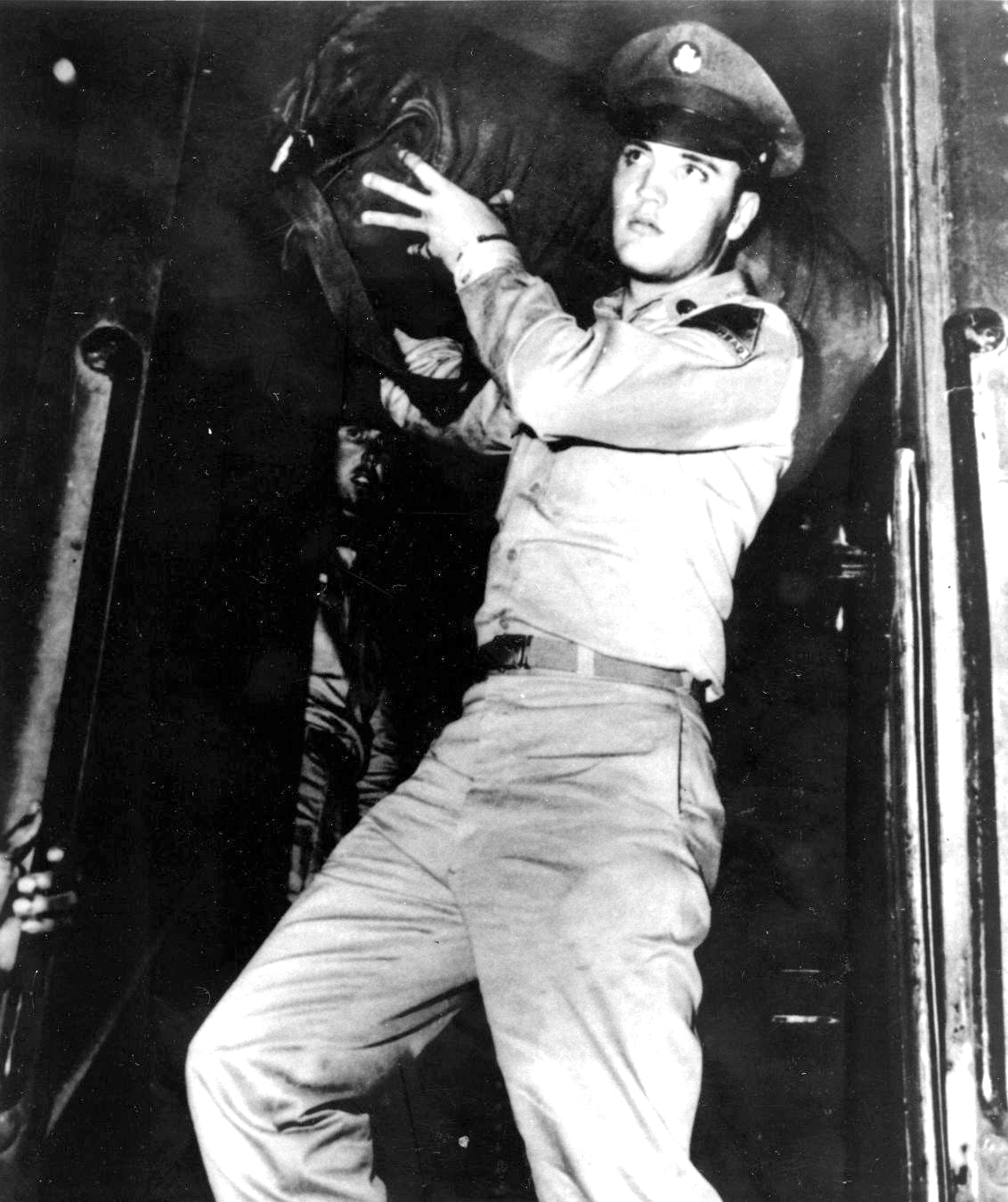
Where Does the Word Duffel Come From?
 Duffel is a small town in Belgium near Antwerp, where a particular type of fabric was woven. Guess what it was called? The fabric is very rough, coarse and woolen. I've run my hands on the raw material. It's not particularly pleasant to the touch but is very durable. And it's still used today; softened duffel is used for coats made of duffel called "duffels" as if that's not confusing enough. In the U.K., for example, a duffel can just as easily refer to the coat as to the duffel bag.
Duffel is a small town in Belgium near Antwerp, where a particular type of fabric was woven. Guess what it was called? The fabric is very rough, coarse and woolen. I've run my hands on the raw material. It's not particularly pleasant to the touch but is very durable. And it's still used today; softened duffel is used for coats made of duffel called "duffels" as if that's not confusing enough. In the U.K., for example, a duffel can just as easily refer to the coat as to the duffel bag.
(For the record, in this very, very odd stock photo below, the gent below is wearing a duffel coat, and his girlfriend. You can tell it's a duffel by the tell-tale buttons, called toggles.)

History of the Duffel Bag
Back to the duffel bag. Duffel cloth was used to make seabags or ditty bags for sailors, whose trademark was a formless shape that could be crumpled up into a small space but also fit many items for a long voyage at sea. The material was durable but heavy as hell when it got wet. At sea, the bags got wet.
Over time, and with access to cotton from around the world (hello, India and American colonies!) the bags began to be made of cotton fabric, which was lighter, cheaper and easier to handle. And much less scratchy.
First Duffel Bag Closures: Rope, Not Zipper
Typically, the bags were closed with a rope or a string, much like a laundry bag. There was no zipper—the zipper was only invented in early 1900s and didn't even appear on pants until 1937; zippered duffel bags were not the norm. More typical: the Royal Canadian Air Force duffel pictured below is a canvas ditty bag with rope draw string. Not particularly secure, but easy enough to haul around.
Duffel bags were designed primarily to fit as many personal items as possible, even providing stretch to cram just a few more items inside; extra socks, photos of a girlfriend from back home and of course, contraband. Lots of contraband.
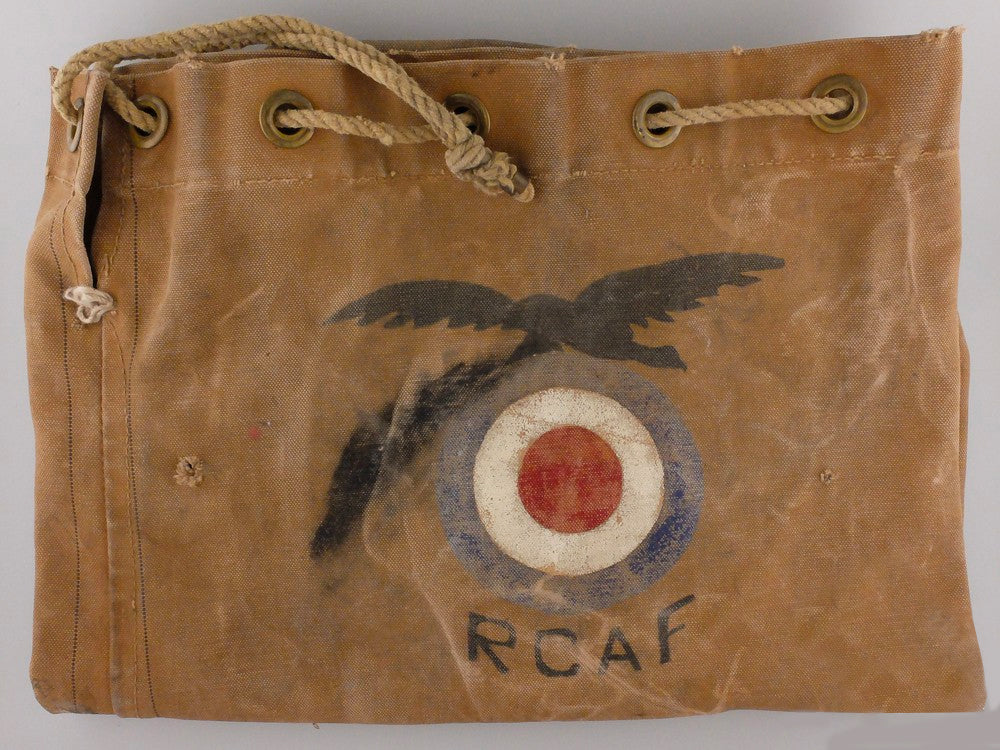
During the Second World War, the duffel bag emerged from these ditty bag. They were issued to soldiers, sailors and airmen in various armed forces, including the U.S., British and Commonwealth. Even the Axis powers got in on the handy product, in various sizes and uses. Most of them were not the barrel-style duffel bag we see today.
The First Duffel Bags Issued in World War II
The first duffel bag issued to U.S. soldiers was the "Bag, Barrack M-1929" which was made with denim woven in the U.S. and blue in color. Soldiers were also issues Barrack boxes, which were made of aluminum and very solid—kind of like a green Rimowa suitcase. Those boxes were incredibly durable, but they were also heavy and hard to carry around.
By the end of the war, the Army-issue duffel bags were made with olive drab material—a sort of army green. Blue was a more expensive dye and wasn't on-brand for camouflage, so olive green became the norm to match the uniforms of the day.
This member of the Greatest Generation pictured below is hauling ashore his duffel bag and his weapon on D-Day, June 6, 1944. It is probably a waxed canvas version for maximum durability and repellence.

Typically, the soldier's duffel bag had his name and serial number stenciled with whatever stencils were available—or simply a felt marker. Many of the duffel bags could be locked with a padlock for securing one's valuables, through brass grommets.
The Barrel-Style Duffel Bag Emerges
In 1943, an improvement was made: instead of a potato sack-style barrack bag, the duffel bag itself was introduced with a circular bottom and cylinder shape, along with a carrying handle. The top of the bag had a flap—still no zippers—and many millions have been issued. Indeed, this bag was typically kept by soldiers on their discharge to haul their personal belongings. This bag, like all military-issued bags, was simply named "Bag, Duffel". (Note that they spelled in correctly! Attaboy).
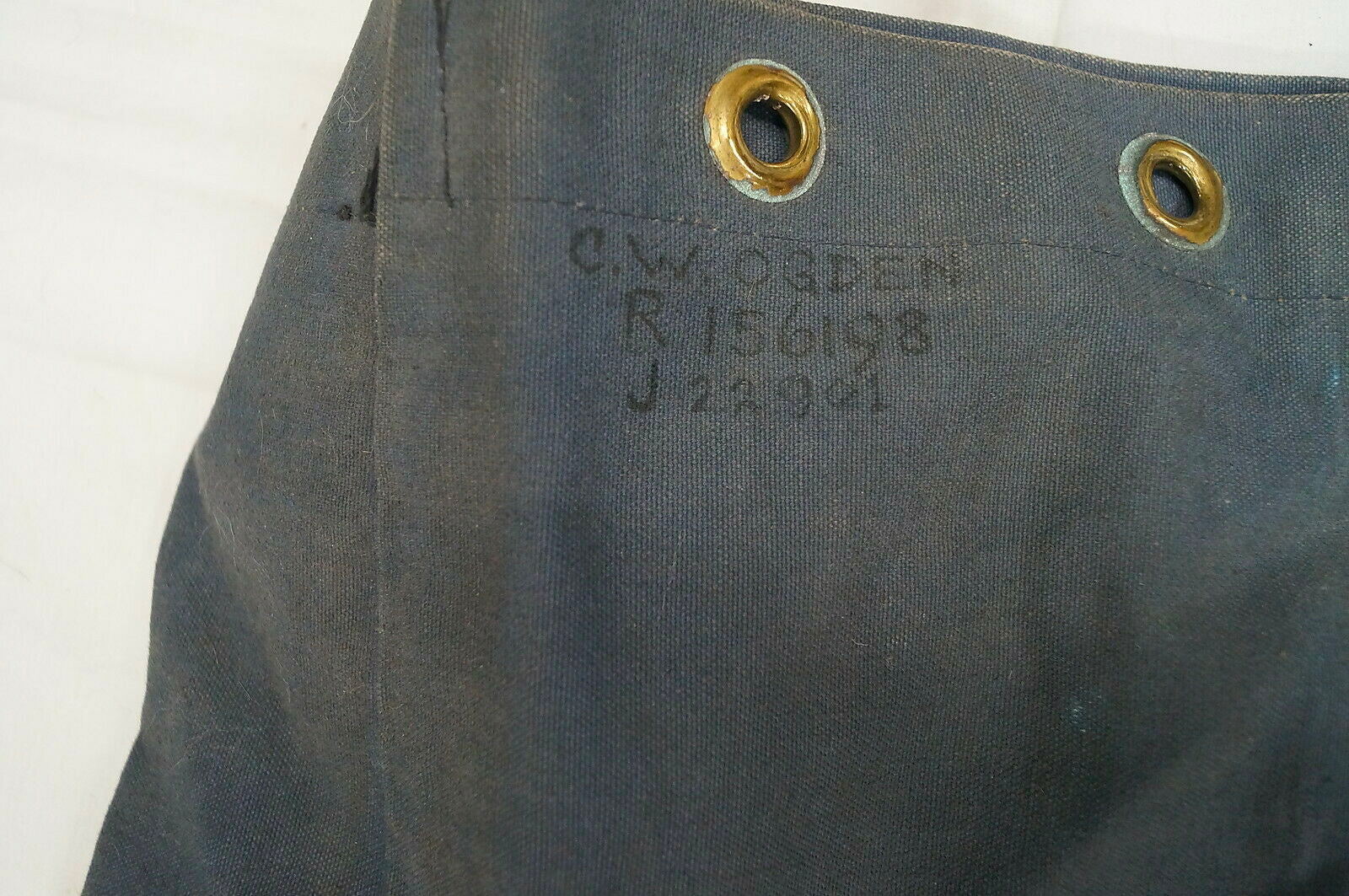

Other bags were manufactured and issued for different purposes. For example, in a second example of a Second World War-era duffel bag, U.S. aircrew in the Army Air Force (the predecessor of the U.S. Air Force) were issued a bag called AN-6505-1, which is boxy and not cylindrical. It was used to carry the flight crew's gear and navigation aids. (Think Memphis Belle.)
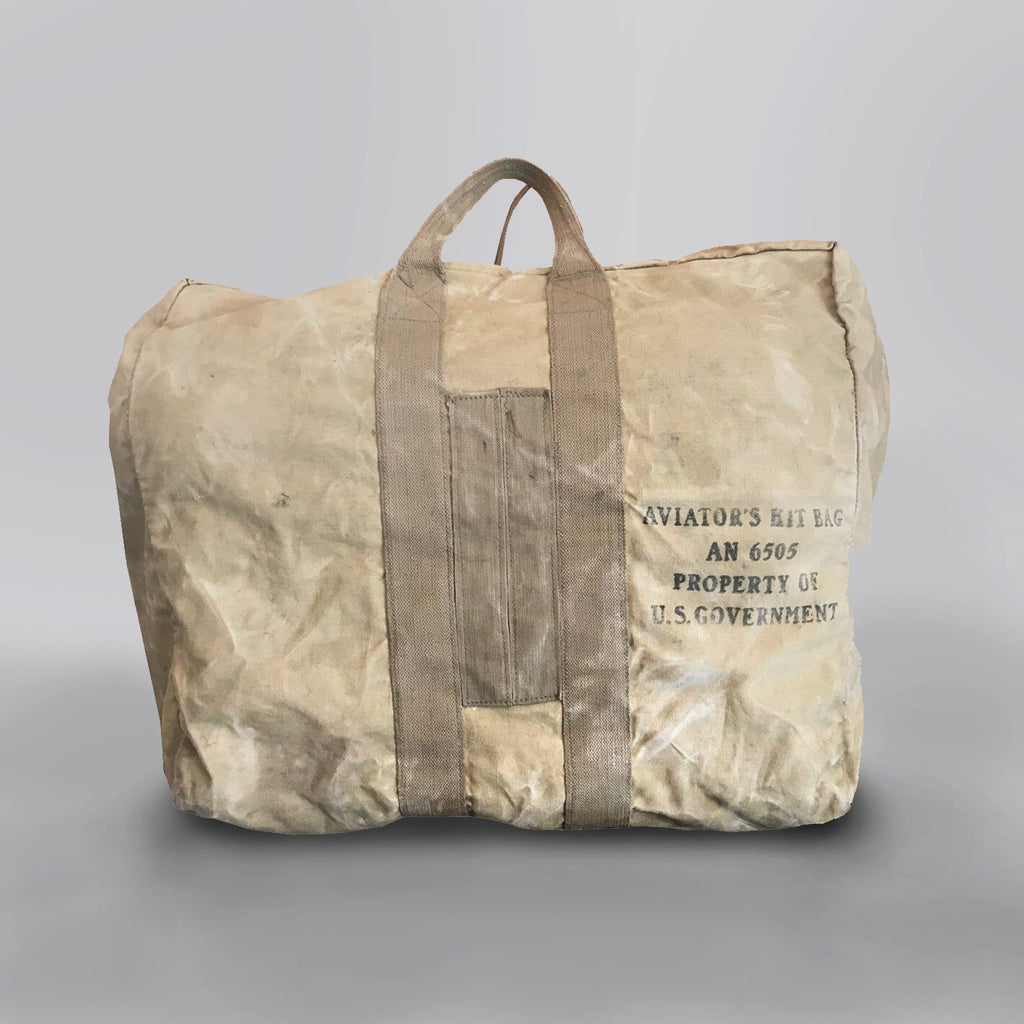 It is pictured in the image above, with a closeup below of a different version, this time in olive drab. You'll see that the straps are made with tightly woven webbing—that webbing is still used today as it can lift tons of weight before failure. In addition, you'll note that the bag itself is made with canvas, which is still used to this day because it is extremely durable, lightweight and made with natural cotton fibers. In addition, cotton canvas comes in various weights, depending on the use and durability required. The white aviator's bag, above, is likely a 10 ounce duck canvas, whereas the bag immediately below is likely a 18-20 ounce duck canvas. (Details, details).
It is pictured in the image above, with a closeup below of a different version, this time in olive drab. You'll see that the straps are made with tightly woven webbing—that webbing is still used today as it can lift tons of weight before failure. In addition, you'll note that the bag itself is made with canvas, which is still used to this day because it is extremely durable, lightweight and made with natural cotton fibers. In addition, cotton canvas comes in various weights, depending on the use and durability required. The white aviator's bag, above, is likely a 10 ounce duck canvas, whereas the bag immediately below is likely a 18-20 ounce duck canvas. (Details, details).
Why were there so many variations of duffel bags? There were dozens of manufacturers called upon for help during the war effort, and they used whatever materials could be produced, be it cotton canvas, waxed cotton canvas or wool-canvas blends.
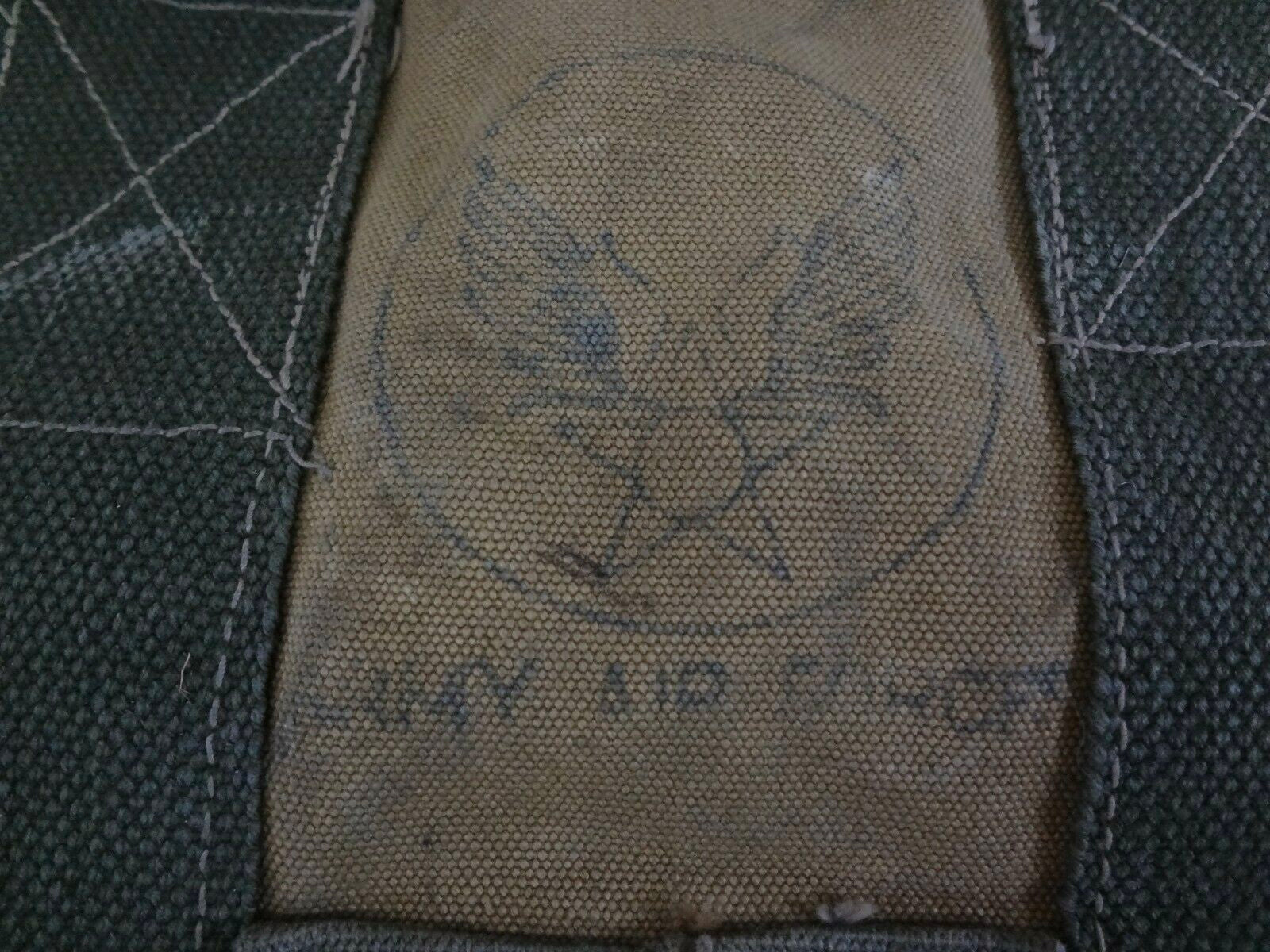
Enter the 1970s and 1980s: The Duffel Bag Gets Colors and Synthetic Fibers
After World War II, the military duffel bags didn't change much in design or color—army green was the norm. Larger versions—the size of a small man and this time with zipper closures—were issued to GIs on enrollment. The duffel bags were still made with olive cotton canvas, typically a lightweight version.

In the 1970s, smaller versions of the duffel bags entered the mainstream for every day use, especially as a gym bag. (Recall that the military versions were open at the top.) This was the barrel-style duffel bag which your parents will point out is pretty retro, today. They came with nylon straps or woven webbing, generally cheap nylon materials and were generally inexpensive (read: cheap). But they were colorful.

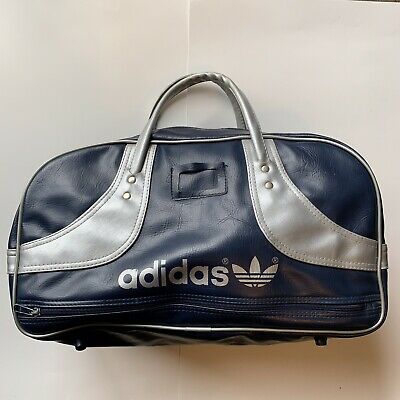
My dad had this exact Adidas gym duffel bag in the early 1980s, made primarily of pleather. I think it did the trick for him—he was in great shape. The bag had a plastic insert on the inside to keep its form, and little plastic feet which were totally unnecessary.
A few other examples, below, include Eddie Giacomin's hockey duffel bag from the New York Rangers, circa 1974 — including battle axe for some reason. There's also a vintage duffel from the University of Notre Dame's football team.
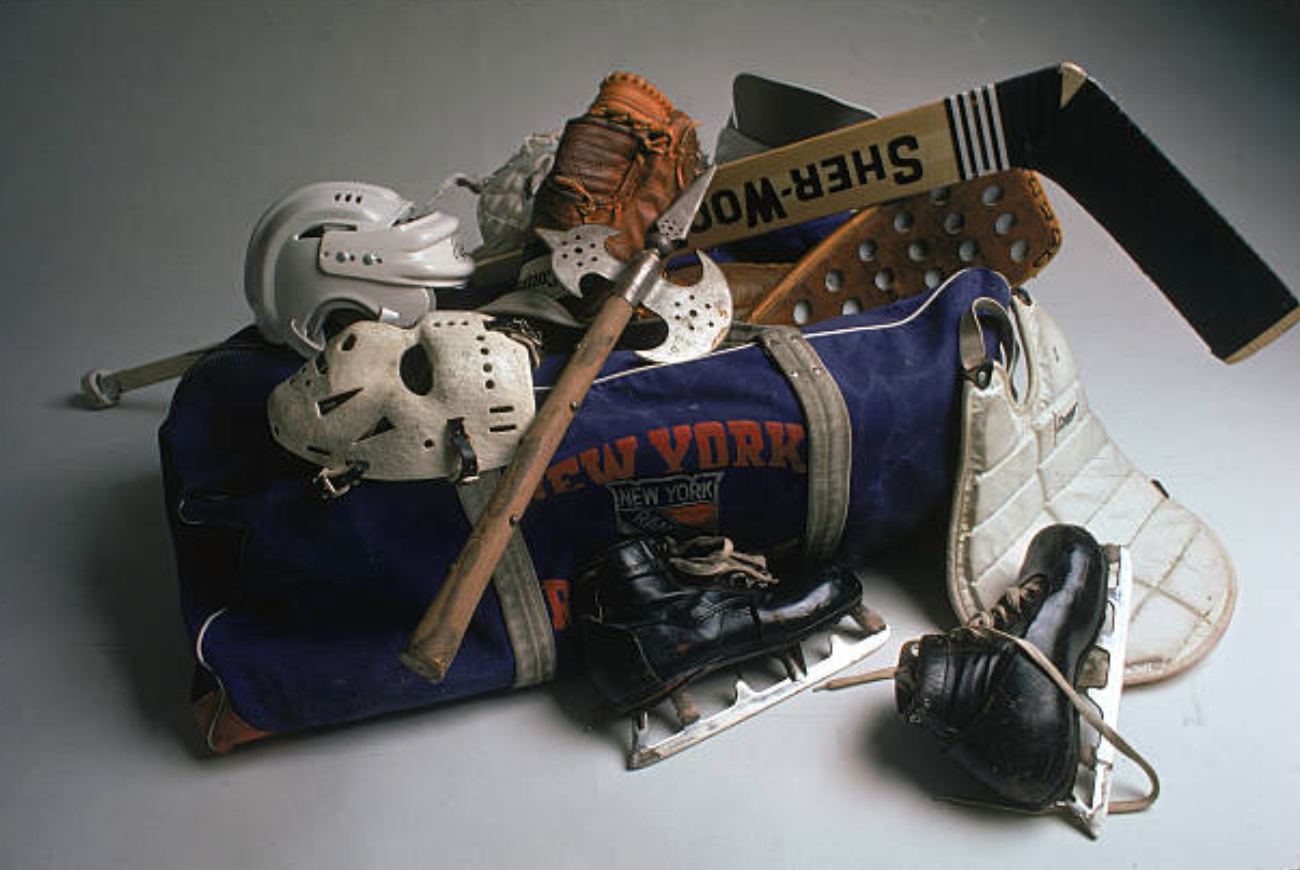

How do you spell Duffle or Duffel Bag?
The correct spelling of the duffel bag is "duffel" but "duffle" is frequently seen. It is simply a grammatical error that has persisted over time.
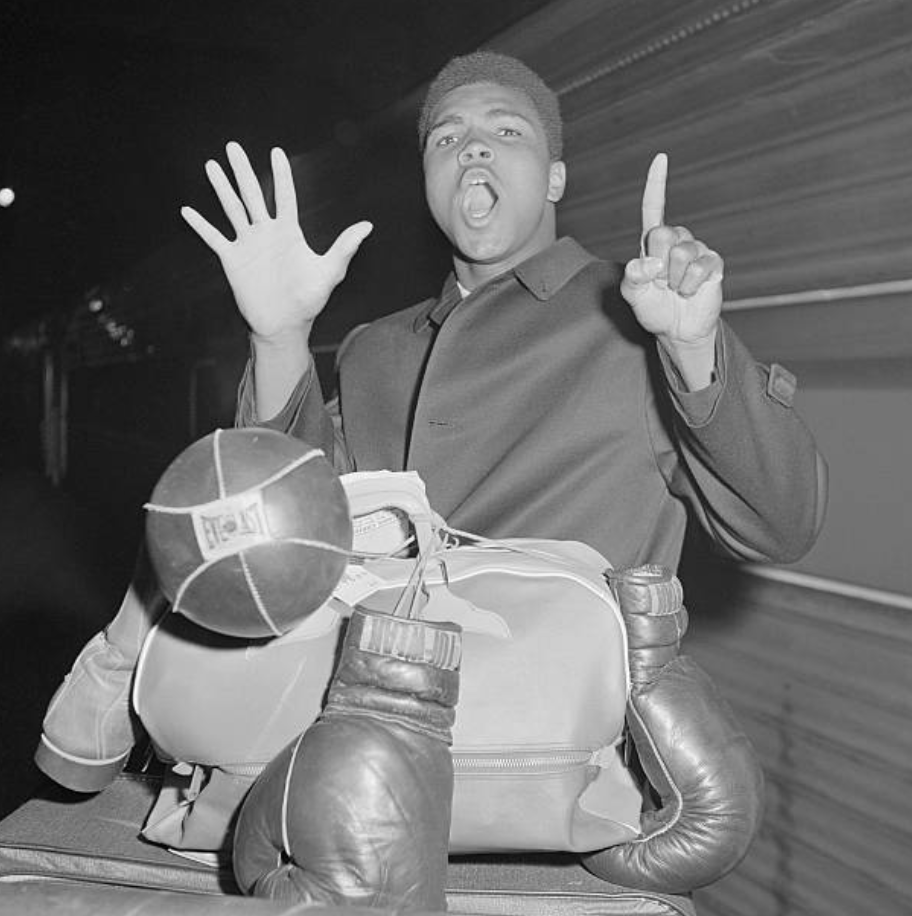
My First Duffel Bag
Back to my duffel.
Ultimately, my first duffel served me well. It was at once durable, indestructible and it had my name stitched on it (and Lt. Gosling, the previous owner, had his name stenciled on the duffel and for reasons unknown returned it to the Army supply store.) As good as it was, the duffel bag was impractical for anything other than schlepping one's gear from base to base. Like every soldier before me, I kept it when I left the military, but it's long gone now. (Now I'm just somebody that she used to know.)
Today, duffel bags are made from a variety of materials, including cotton canvas, waxed cotton canvas, polyester, vinyl, leather and Cordura nylon. It pays to know the difference. Stick with the natural fabric outers and avoid polyester at all costs, unless you feel like buying a new duffel bag in a few months. (From Boarding Pass, if you do it right.)
Duffel bags are still issued to soldiers, sailors and airmen around the world. They are used extensively by gym bros, commuters, Wall Street types, beach goers, soccer players, weekend warriors — all of whom are traveling the journey of life. Pack as much as possible, as quickly as possible, and be off to travel the world.
In the meantime, don't hesitate to check out the duffel bags Boarding Pass makes. We happen to like ours a lot.
Mike Arnot is the founder of Boarding Pass NYC.
